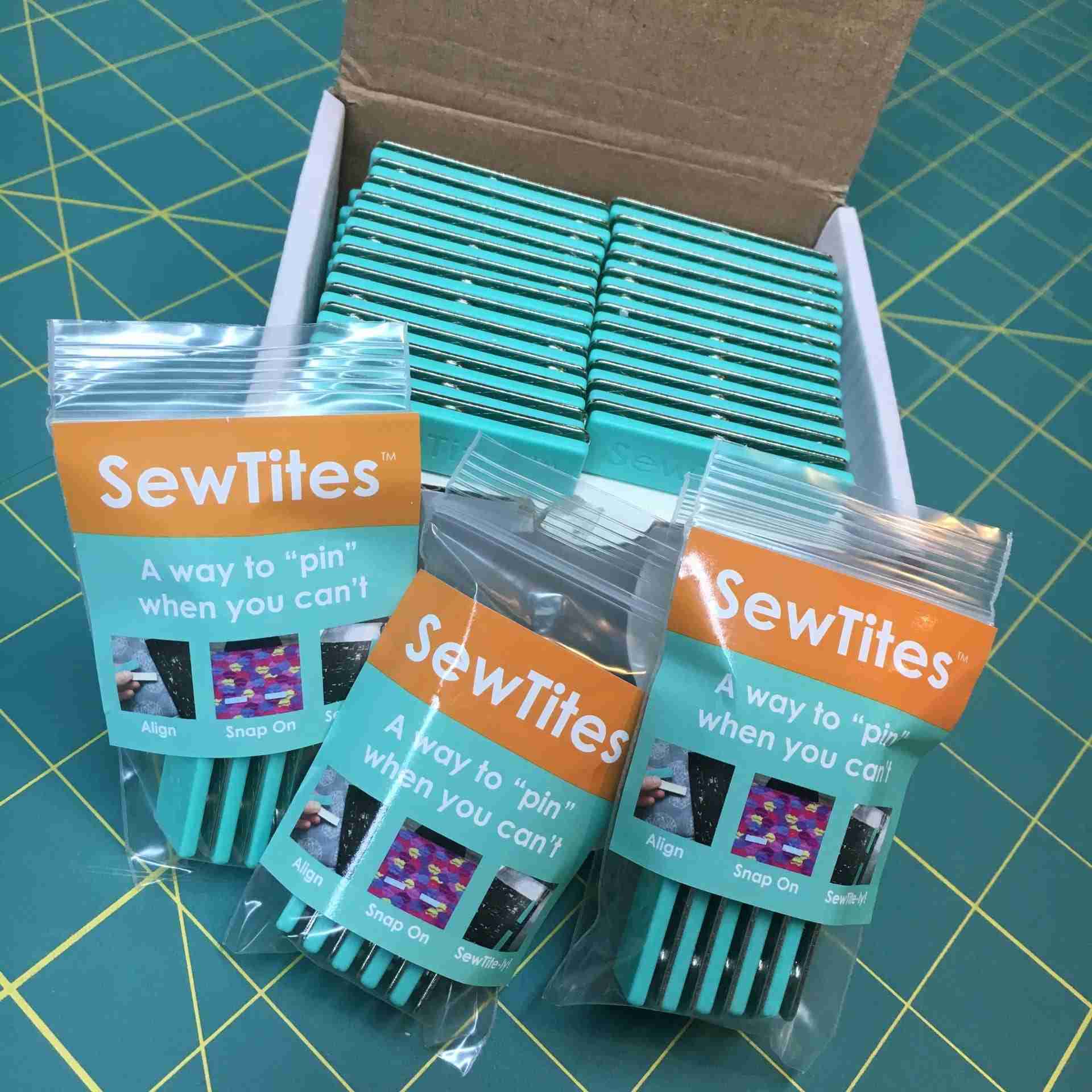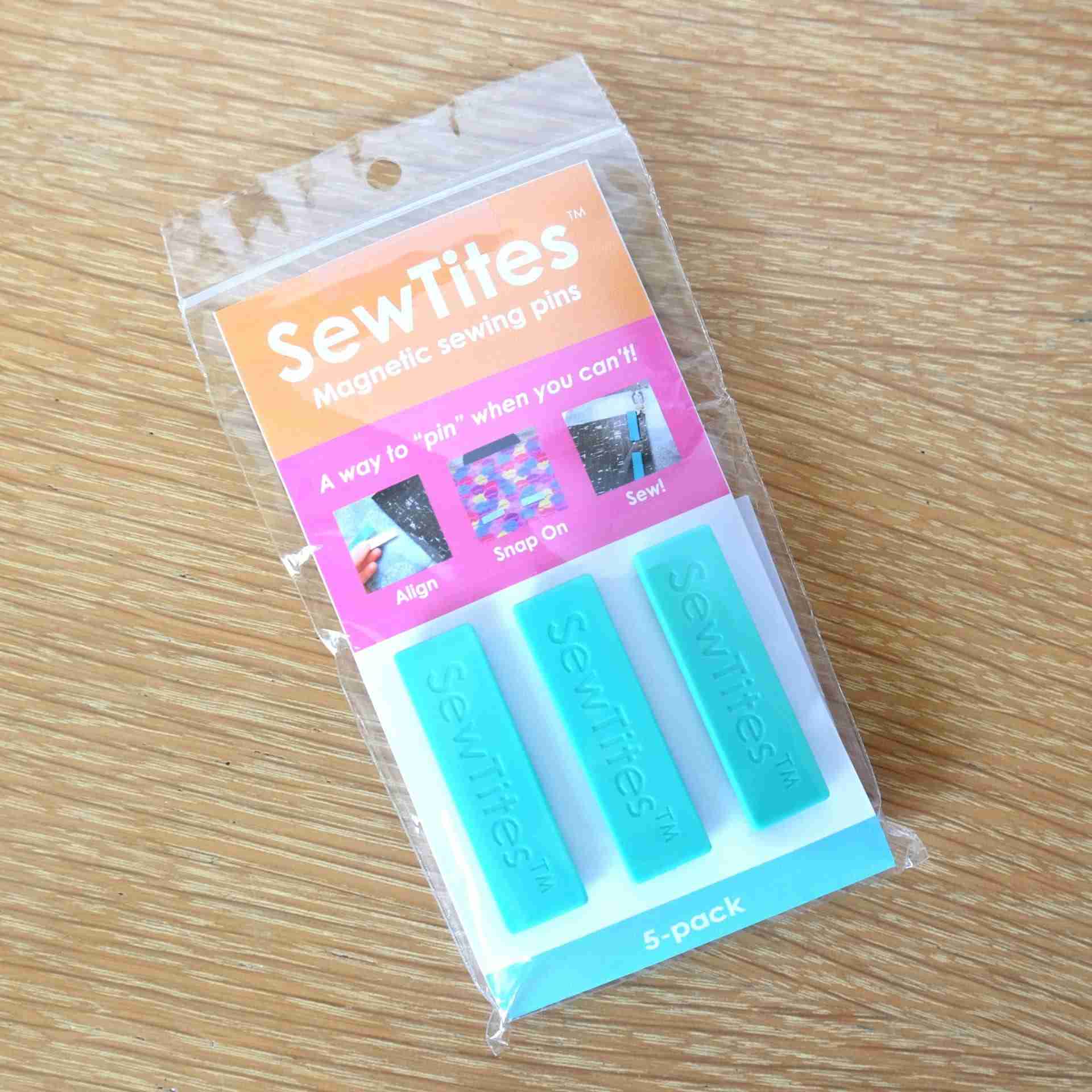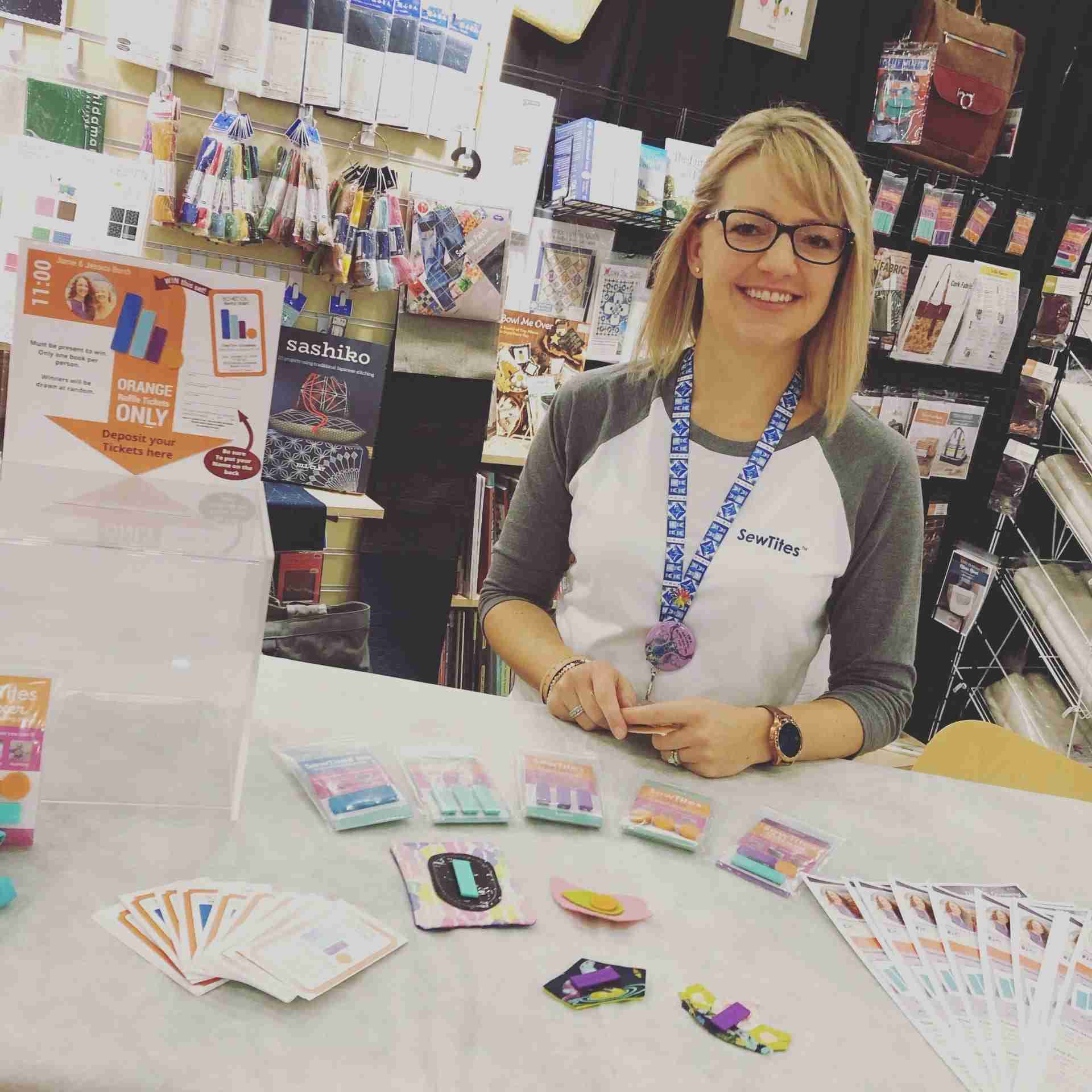Innovation is a constant driver of progress in the ever-evolving landscape of crafting and sewing. Being innovative is an area where many female entrepreneurs thrive.
Jessica Drain, co-founder of SewTites, along with her sister Jamie, have exemplified the spirit of female entrepreneurship by transforming a simple idea into a thriving business that serves the unique needs of the sewing community.

This article delves into Jessica’s journey as a business owner, the challenges she faced, and the profound impact her venture has had on her life.
The Birth of SewTites: A Solution for Modern Sewing Needs
When asked about the inspiration behind SewTites, Jessica shared, “SewTites are ‘Magnetic Sewing Pins’–a way to ‘pin’ when you can’t. They are an alternative to straight pins and other methods of holding fabric and other materials together while you sew.”
Jessica’s sister, Jamie, was sewing a leather handle on a bag and couldn’t find a suitable way to pin it down without damaging the material.
Jamie’s innovative thinking led her to use magnets, which not only solved her immediate problem but also laid the foundation for SewTites.
“Jamie was pretty proud of herself for the idea and shared it with me,” Jessica recalled. “As a career marketer and graphic designer, I realized this was likely a solution many others needed.”

Initially, SewTites’ business goals were to create a product that addressed common sewing challenges and establish a brand that could grow within the crafting community.
This realization was the genesis of SewTites, co-founded by the two of them, which now offers a range of magnetic tools designed to simplify the sewing process.
Navigating Challenges and Building Success as Female Entrepreneurs
Starting any business comes with its hurdles, and SewTites was no exception.
“This journey has been pretty magical,” Jessica remarked, noting that experiences in business for both herself and Jamie played a crucial role in overcoming early challenges.
In the broader business world, female entrepreneurs face unique challenges and opportunities, including the need for support, mentorship, access to resources, and addressing systemic barriers and biases to thrive and lead.
One significant obstacle they faced was navigating the complexities of manufacturing. From sourcing products and dealing with defects to prototyping and testing, the learning curve was steep.
Jessica emphasized the importance of balancing risk, setbacks, and opportunities to avoid fatal mistakes. “We’ve learned a lot about manufacturing and have grown continuously by carefully managing these aspects. Ever since we started, we’ve had non-fatal failures (or, as I like to think of it, learning opportunities).”
As a Female Entrepreneur, Jessica Understands the Value of Mistakes
When they first created their packaging, they adhered the product to the cards inside the bags—and didn’t get a sample of the adhesive used. Their team was given the direction “that it needed to stick strong enough that the product wouldn’t move when shipped from the factory to us, to distributors, to retailers, and ultimately to consumers.”

They wanted the adhesive to “peel off,” but the description got lost in translation, resulting in a “sticky mess” that was difficult to remove.
This issue arose early in their journey when they lacked the funds to remake the product.
So, they inserted cards into the packs to inform customers of the problem and their plans to fix it, offering a discount code for future purchases and explaining how to remove the adhesive.
Because of the long shelf life of products at retailers, they faced numerous complaints, even years later. However, they iterated on the packaging design and persevered.
Another major mishap occurred during the development of a product in collaboration with Tula Pink, a prominent figure in the quilting and sewing industry who wanted to create a Tula Pink SewTites model.
Despite prototyping the item, they didn’t subject it to extensive testing.
Consequently, the method used to adhere the magnets to the plastic covering was faulty, causing the products to fall apart upon receipt in people’s mailboxes.
Fortunately, they were uncertain about how many to produce in anticipation of the launch and Tula Pink’s influence, so they “only” had to replace about 2,000 packs (approximately 10,000 SewTites).
This was minor compared to the total number of units sold for that product. They manufactured a new model within a day and promptly provided replacements.
From Idea to Product: The Entrepreneurial Journey
The transformation of an idea into a tangible product is a journey filled with insights and learning.

For Jessica and Jamie, having friends and advisors with business and manufacturing expertise provided invaluable guidance.
“Our product was also super easy to get to market,” Jessica noted. “We were selling it within a couple of months of realizing it was a good idea.”
She credits their success to focusing on intellectual property, marketing, and branding from the outset.
“I firmly believe spending money on these types of things is imperative to building a successful business,” she said.
This strategic investment in the brand and protection of its innovations has been key to SewTites’ growth and success.
Equity investment has also played a crucial role in supporting SewTites’ growth and success, providing the necessary financial backing to scale their operations.
Find Your Niche and Be Creative
She says, “Our product is very novel. If you don’t know what SewTites are, you don’t know why you need them, so people learning what they are and how they help them is key to sales.”
They did basic social media posts, showing people how to use SewTites. However, they also knew from the outset they needed pattern designers, social media influencers, and quilting and sewing teachers to help them promote the product.
“We had made industry friends from our journey in the business that SewTites was born out of, so we sent samples to them. We also researched and found social media influencers and quilting and sewing instructors who asked if we could send them samples to try.”

If they liked them, Jessica and Jamie asked them to share SewTites on social media and in their classes—and if they didn’t, to give the women feedback. Jessica says, “This took a lot of time, but it was a very cheap way to “seed” the market—and it is still something we do, though we also get people coming to us.”
Of course, their distributors also had sales reps touting the products.
Advice for Aspiring Female Entrepreneurs Who Start Their Own Business
Jessica’s journey offers valuable lessons for aspiring entrepreneurs.
It is crucial to stay true to oneself and share recommendations with other female entrepreneurs to foster a supportive community.
“Don’t let fear stop you,” she advised. “Take small steps, even if it’s one step a week. Keep your day job and work your idea on the side. Learn how to market and manage business finances. Everyone has been an amateur or a beginner–what matters is starting and grinding.”
Her emphasis on continuous learning and incremental progress highlights the realistic approach necessary for success in entrepreneurship.
Jessica’s story is a testament to the power of persistence and the importance of leveraging one’s existing skills while acquiring new ones.
Many Successful Women Entrepreneurs Are Also Busy Moms
Being the co-founder of SewTites has had a profound impact on Jessica’s personal and professional life.

“It’s completely changed my life and I’m so grateful for it,” she reflected. As a single mother, Jessica appreciates the flexibility and fulfillment that running her business offers.
Running small businesses provides a unique opportunity to balance professional aspirations with personal commitments.
She works part time around her kids’ schedules, earns a decent living, and creates products that enhance people’s lives.
“All the pain and ‘learning opportunities’ of the past 20 years of my career and life have flowed into creating something unique and special,” she shared.
Jessica’s journey is not just about business success, but also about creating a meaningful and balanced life for herself and her family.
Before to SewTites, I was a freelance graphic designer and marketer. Until about 2014, I struggled immensely with time management and “getting it all done.” Then, I learned about time blocking, which completely changed my life.
When I show people my calendar, they think I’m crazy, but it’s kind of my secret superpower–I get more done in less time than almost anyone I know–and it helps me see at a glance if I’m upholding not only my professional values but my personal ones.
I just shared a video on LinkedIn about this and how I do it (and three shorter Reels on my public IG and FB profiles because of the time limits on those platforms).
Women Can Shatter the Glass Ceiling and Own Their Own Thriving Companies
Jessica Drain’s journey with SewTites is a shining example of female entrepreneurship in the craft and sewing industry. Jessica’s achievements as a business leader, including founding a successful startup and securing substantial investment, highlight her significant role in the industry.
Our newest product, the Sew Magnetic Cutting System, is a revolutionary way to cut fabric and other materials. We will continue to expand this line of products and magnetize other quilting, sewing, and crafting products.
My sister says we use magnets like ketchup—we put them on everything! Ultimately, we aim to grow SewTites for the next 4 to 5 years. Then, we will evaluate whether we want to sell it to a larger company that can take it even further or if we’ll keep going on our own.
Her story underscores the importance of innovative thinking, strategic planning, and the courage to take small, consistent steps toward one’s goals. You can apply this mindset to many parts of life, even if you do not own a small business.

However, we female entrepreneurs are truly a special group of business owners.
As Jessica continues to inspire other women with her story, SewTites is a testament to what happens when passion meets perseverance.
Do you have any advice for female entrepreneurs on how to be resilient when facing challenges? Let us know in the comment section below!






















0 Comments